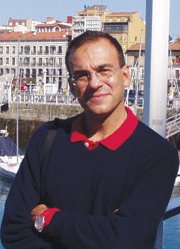E-Archive
Shot Peening in the Automotive Industry
in Vol. 17 - March Issue - Year 2016
Two Different Ways To Intend Shot Peening In Automotive

Mario Guagliano
There is more than one way to carry out shot peening in the automotive industry, and all these ways are related to the real use of the car whose parts are being treated and to the production volume of the car of interest. Nevertheless, two main ways can be easily recognized and addressed. It is interesting to briefly analyse these, since we can recognize two ways to apply this treatment, being at first completely different but somehow complementary.
The first, the most important from a quantitative point of view, refers to large production cars, the second to sportive cars. Why such a wide difference in the concept of shot peening if we deal with these two different cases? Well, because a remarkably different way to introduce the treatment allows for the best results in both cases.
If we look at cars produced in million units, the primary goal is to save money, have adequate reliability and, for sure, an improvement of performance to make possible the reduction of the size of the gearbox and of the other mechanical components.
This means that the chosen plants must prioritize the efficiency in terms of production rate, cost of plants, quality and, probably, with standard, well-validated shot peening parameters that enable achievement of an adequate improvement of the fatigue cycle (sometimes not only fatigue) without forgetting the primary technical goal; that is, to achieve adequate system reliability and safety margin.
In technological terms, it means that the choice will be oriented toward centrifugal turbine machines, which make possible the achievement of the desired production rate and uniformity of process needed for this kind of industrial process.
On the other hand, if we think of sports cars, and in particular, race cars, the budget (at least generally) is not the main concern, while the owner of the team, if adequately supported by some sponsor, wants just to win! In addition, in this case, it is possible to change some mechanical parts after one, two, or three races. If we think of shot peening, it means that the choice of the peening parameters has more degree of freedom; or, in other words, the selection of the treatment parameters can be done more carefully, considering not only the case of the infinite fatigue life but also to maximize the fatigue strength for a limited number of cycle (it means to adopt a fatigue design criterion called "safe-life"): a more difficult task!
This means also a major control of the process, an increased flexibility, and a major cost.
In other words, in this case, it is important to optimize the process, not only in terms of costs but mainly as regards the expected properties and the performances of the treated parts. Moreover, finally, allowing an achievement in reduction of weight that can be the hot point to win a race.
In technological terms, this means that in these cases, the preferred choice of the shot peening plant will probably look at pneumatic plants. These are not able to guarantee the same production rate as the centrifugal ones but make possible a stricter control of the process and the possibility to more easily change the way shot peening is performed.
In this case, shot peening is more similar to how it is done in the aeronautic environment: and it is not a case that most of the scientific knowledge of shot peening and the relations between the process parameters and effects on the mechanical properties come from investigations and experiments done in aeronautics.
What can we learn from this issue? Indeed, it is true that many design solutions originally adopted in race cars become, sooner or later, a part of everyday cars. It would be great if this could be valid also for shot peening, with innovative and more performing solutions adopted also for large volume production cars, by following an approach similar to the one used in aeronautics.
Shot Peening in the Automotive Industry
by Mario Guagliano
Contributing Editor MFN and
Associate Professor of Technical University of Milan
20156 Milan, Italy
E-mail: mario@mfn.li



























